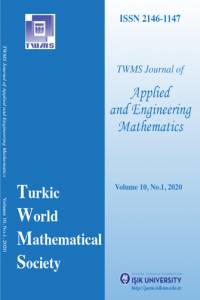NUMERICAL RANGE AND SUB-SELF-ADJOINT OPERATORS
In this paper, we show that the numerical range of a bounded linear operator T on a complex Hilbert space is a line segment if and only if there are scalars λ and µ such that T ∗ = λT + µI, and we determine the equation of the straight support of this numerical range in terms of λ and µ. An operator T is called sub-self-adjoint if their numerical range is a line segment. The class of sub-self-adjoint operators contains every self-adjoint operator and contained in the class of normal operators. We show that this class is uniformly closed, invariant under unitary equivalence and invariant under affine transformation. Some properties of the sub-self-adjoint operators and their numerical ranges are investigated.
Keywords:
Numerical range self-adjoint operator, normal operator,
___
- Donoghue, W. F., (1957), On the numerical range of a bounded operator, Michigan J. Math., 4, pp. 261-263.
- Gustafson, K. and Rao, D. K. M., (1997), Numerical Range. The Field of Values of Linear Operators and Matrices, Springer. New York.
- Halmos, P. R., (1982), A Hilbert Space Problem Book, Springer-Verlag. New York. Heidelberg. Berlin. Second edition.
- Kippenhahn, R., (1951), ¨A Uber den Wertevorrat einer Matrix, Math. Nachr. 6, pp. 193-228.
- Kippenhahn, R., (2008), On the numerical range of a matrix, Linear Multilinear Algebra 56 no. 1-2, pp. 185-225. Translated from the German by Paul F. Zachlin and Michiel E. Hochstenbach.
- ISSN: 2146-1147
- Başlangıç: 2010
- Yayıncı: Turkic World Mathematical Society
